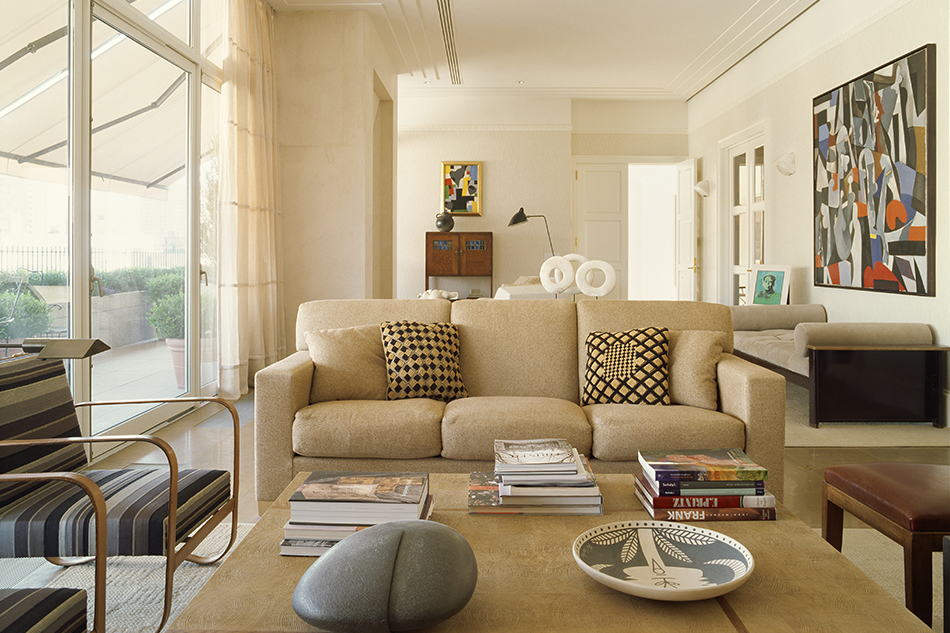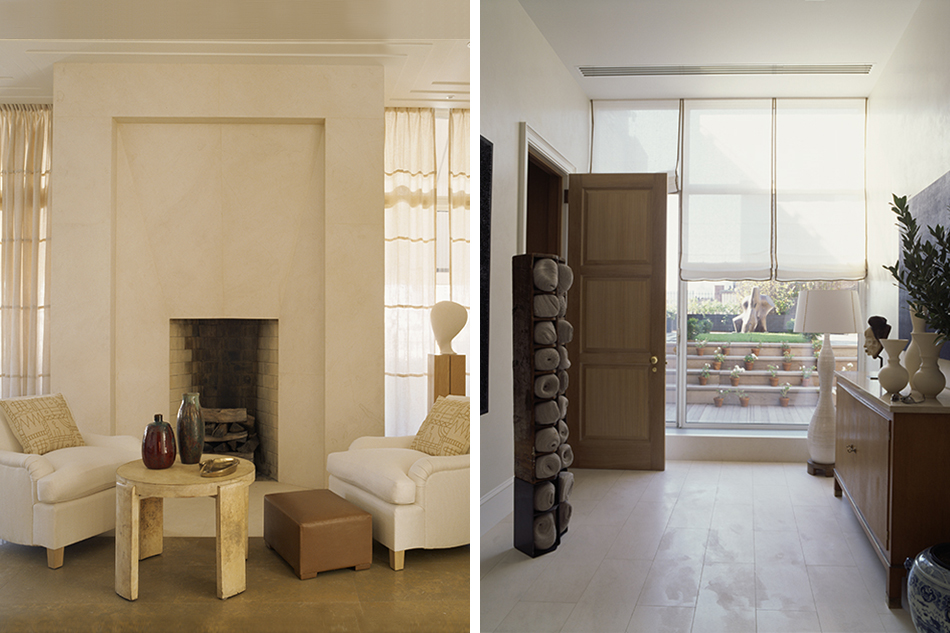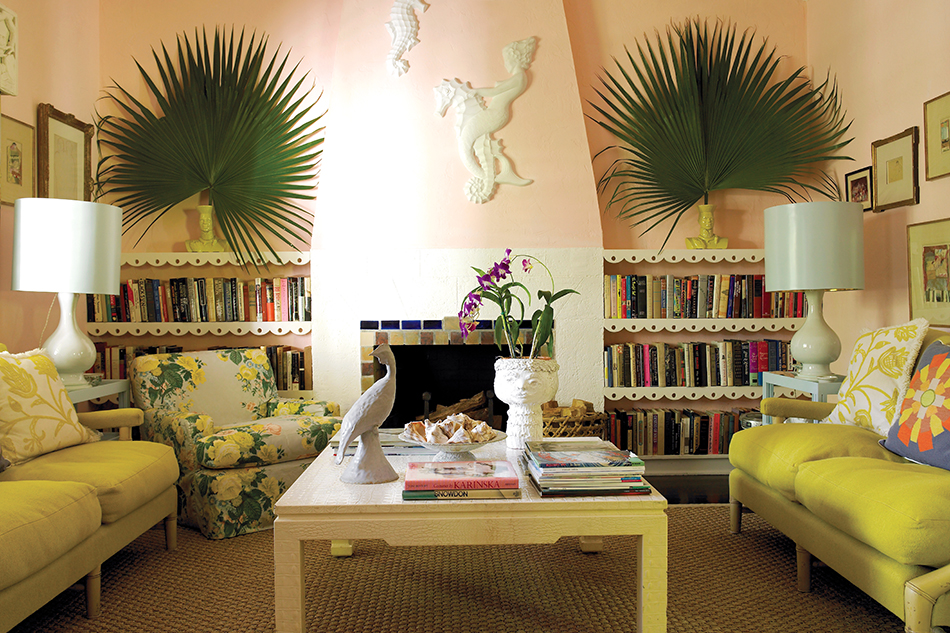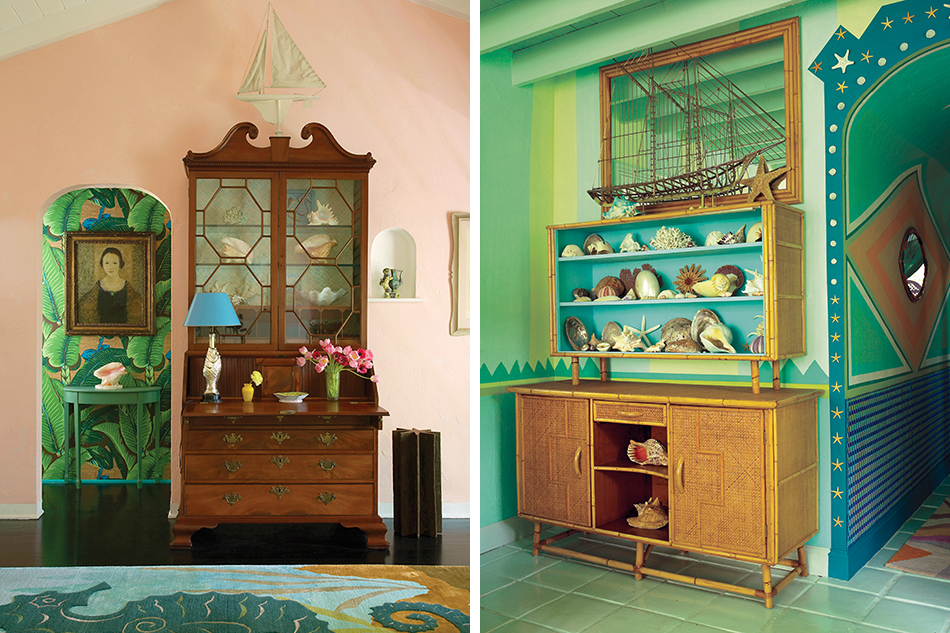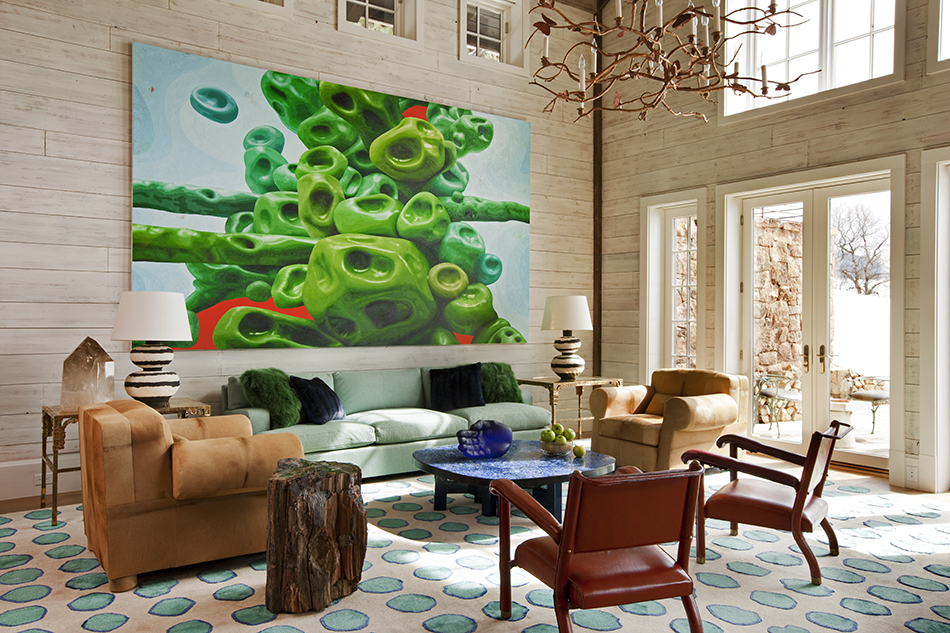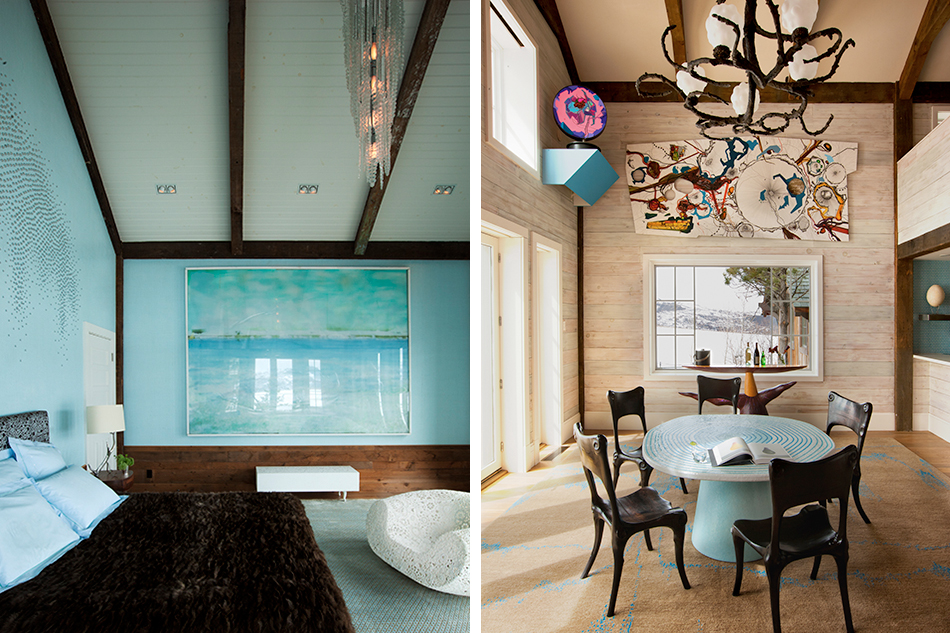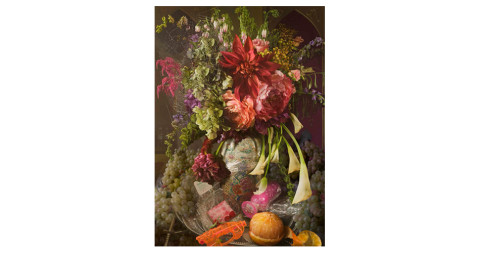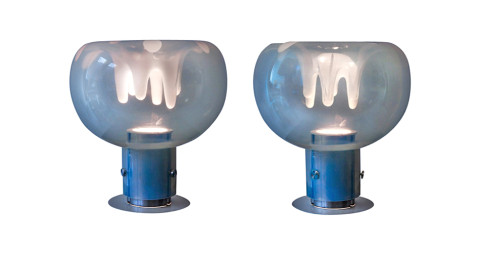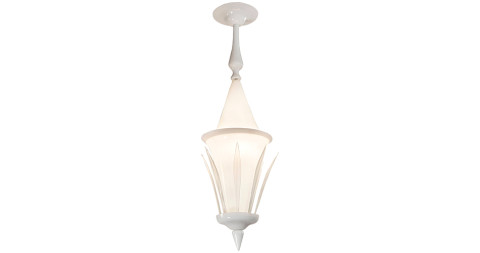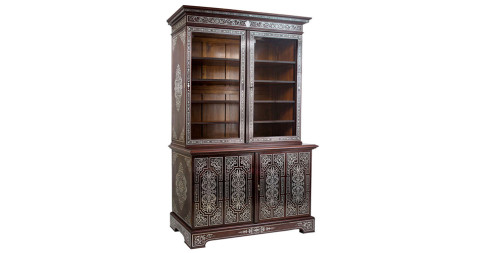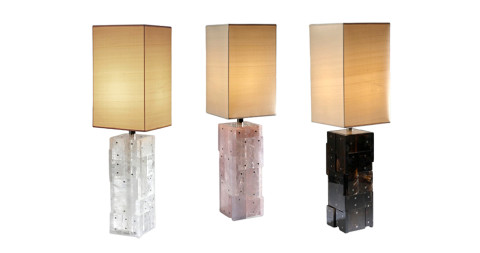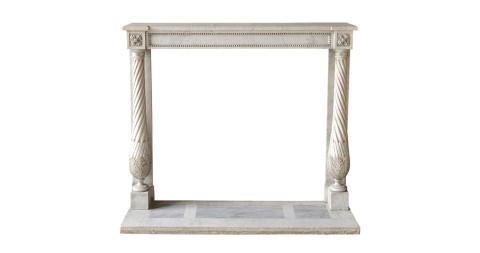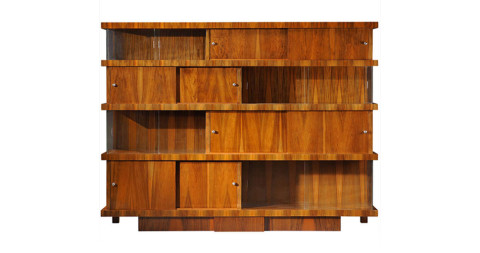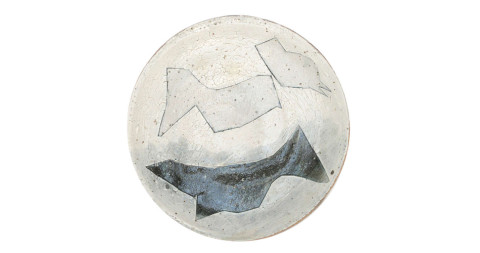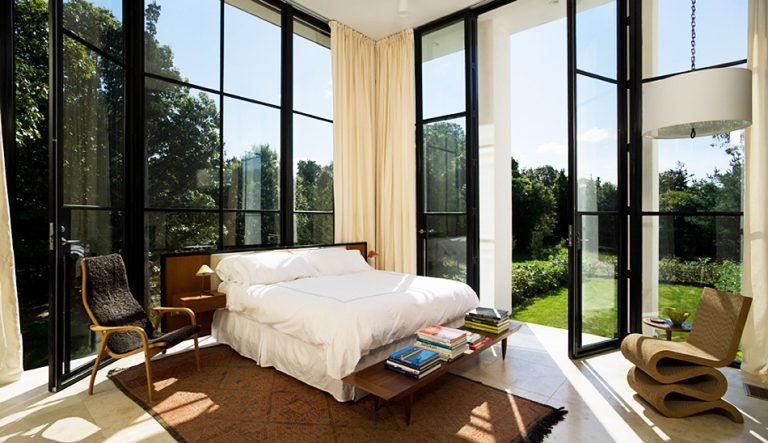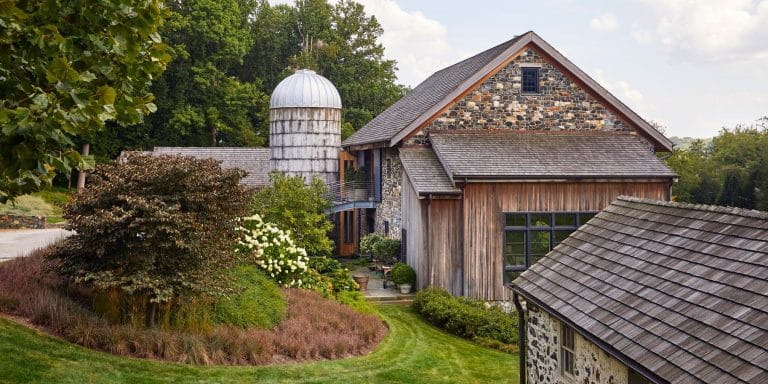
June 8, 2015After working for Christie’s and architect Peter Marino, designer Frank de Biasi launched his own firm (photo by Stephen Johnson). Top: In an Aspen, Colorado, home, de Biasi set an American Chippendale secretary desk near circa-1955 wallpaper from Miami Beach’s Fontainebleau Hotel. “It’s important for all the elements in my rooms to have a dialogue,” he says. Photo by John Ellis
Having long admired the elegant, layered interiors designed by New York decorator Frank de Biasi in Vogue and Architectural Digest, I was delighted to spend a week with him on a recent tour of Cuba that was organized as a benefit for Sir John Soane’s Museum of London. De Biasi was an ideal travel companion: an avid design historian and observant architecture buff, as well as smart, funny and full of the charm and good manners of his native Virginia.
Before establishing his Manhattan design firm in 2006, de Biasi was the director of interiors for architect Peter Marino — and prior to that, he worked at Christie’s, starting in the mid-1980s. Today, when he isn’t traveling the world for clients, he splits his time among his homes in New York, Paris and Morocco.
After returning from Cuba, we sat down for a chat.
You studied international relations at George Washington University. How did you end up going into design?
After spending a year in Paris at the Sorbonne, studying international affairs as well as art history and French, and then earning a degree in international affairs at GWU, I found a wonderful job at Christie’s working with Stephen Lash and Marc Porter in the estates and appraisals department. Over my six years there, I was fortunate to see many great collections across the country.
Afterwards, I joined the school I call PMU, or Peter Marino University. There, I was able to incorporate my interests in art history and design with the diplomacy skills I’d learned in college. Everyone knows that being a successful designer requires the finesse and subtle persuasion of a diplomat!

In the living area in Aspen, a Claude Lalanne chandelier hangs above an abstract painting by Anselm Reyle. The room also features a bronze desk by Studio Job, a red-leather armchair and black-leather cabinet by Jacques Adnet and resin lamps by Marie Claude Fouquieres. Photo by John Ellis
What did you learn from 12 years with Peter Marino?
That each project is individually created. Peter taught me to respect the individual client and see what is unique in every object and type of taste. He is one of the few exceptionally talented architects who truly understands interiors, which is why his work seamlessly incorporates both architecture and interior design into beautiful and highly functional spaces. Also, Peter is always five steps ahead of everyone else when it comes to recognizing a new zeitgeist. I know this comes from his intellectual curiosity and international travel, and it is something I attempt as well.
Apart from interiors created by fellow professionals in the trade, whose personal spaces do you most admire?
Yves Saint Laurent. I saw his Paris place on rue de Babylone before it was sold, and a friend and I stayed several times at Villa Mabrouka, his home in Tangier. Another favorite is the American society doyenne Bunny Mellon, whose work I was able to see firsthand in the 1990s. Each of her houses was so exquisitely thought-out and detailed but with an overall feeling of softness and comfort.
“Everyone knows that being a successful designer requires the finesse and subtle persuasion of a diplomat.”

A vintage Nepalese carpet in the shape of a stylized tiger sits atop darkly finished floors in the Miami home. Once again, Gene Meyer created the painted and shell-adorned walls. Photo by Mark Roskams
And what are your other favorite houses around the world?
There are so many: the Greek Villa Kérylos, built in the early 1900s in Beaulieu-sur-Mer, France, by Théodore Reinach, an archeologist and lover of all things ancient and Greek; in Tunisia, the 1920s Andalusian-inspired palace of the Baron d’Erlanger, in Sidi Bou Said, and the Villa Dar Sebastian, in Hammamet; Eileen Grey’s E-1027, in Roquebrune-Cap-Martin, in the South of France, a simple, seaside house; Villa Santo Sospir, in Saint-Jean-Cap-Ferrat, France, the house of the late Francine Weisweiller, which was decorated by Madeleine Castaing, with sublime murals by Jean Cocteau. It has everything I adore — beach, wicker, printed fabrics and wall murals!
My most recent favorite is the studio-house in London’s Holland Park (now the Leighton House Museum) created in the mid-1800s by the painter Frederic, Lord Leighton. His mix of 19th-century English tiles by William De Morgan and Ottoman Iznik tiles from the 14th through 16th centuries makes his stair hall and “Arab Hall” two of the most spectacular and complete environments I’ve seen. I adore the Aesthetic period, and it reached its zenith here.

For a relatively rare hospitality commission — the classically French restaurant Boulestin, in London — de Biasi incorporated the space’s dramatic original skylight into his crisp and handsome design. Photo courtesy of Boulestin
You seem to derive a lot of inspiration from travel.
I’m always on a plane. I have had an apartment in Paris’ sixth arrondissement for eight years and a home in Tangier for six. The locals always inspire me, especially as I love to cook, and eating is my favorite pastime after decorating. The way to really get enthusiastic about a place is to learn about its food, especially by shopping the local markets.
In addition, I always seek out the local craftspeople who have been doing one thing well for many years and take great pride in it — be it tooled leather, woven rattan or painted ironwork. This is what excites me, trying to incorporate their products into my projects. My clients really appreciate this.
Do you mostly decorate houses?
Our projects are mainly residential, and a large portion are for either “repeat customers” or the children of clients. As homes become bigger and more complex, we help update and even restore them.
Recent commercial projects include the London restaurant Boulestin, which serves classic French cuisine on St. James’s Street. On the drawing board are plans for more restaurants and some small hotel projects.

At a Bal Harbour home in Miami Beach, de Biasi created a symmetrical composition, placing a pair of carved-oak armchairs by Suzanne Guiguichon in front of two wave photographs by Jeffrey Rothstein and a pair of Loukoum glass cube lights by Christophe Côme. Photo by Mossimo Listri
How do you approach the décor of a given room?
When I start a room, my first step is to understand its function or program. Nowadays, rooms often serve several purposes at once. I’m now doing a couple of apartments with a playroom-dining room, so you can imagine what it takes to go from toys and games to a formal dinner in the same space. In doing this, it’s crucial to get the architecture, especially storage, right — as well as traffic patterns. Rugs and lighting come next. If there are art and antiques — and I think each room needs at least one good antique! — then they are incorporated after that. It flows from there.
What defines the experience of a visitor to an FDB interior?
I don’t think objects alone define the experience, but rather the whole mix of objects, fabrics, wall finishes and architecture. I prefer not to give everything away in the first glance. I like someone to take in all the different elements gradually, understanding what each layer is about by peeling it back slowly. No plain, white walls with a few un-curated, unrelated objects. It’s important for all the elements in my rooms to work together and have a dialogue where you can eventually understand who the person living here really is, what they like and collect and how they live in the space.
The secret of your success?
Not imposing too much of myself on a client’s home.

